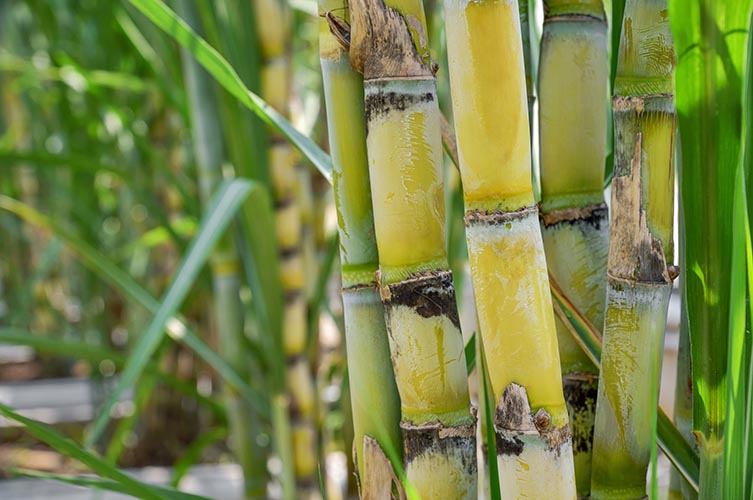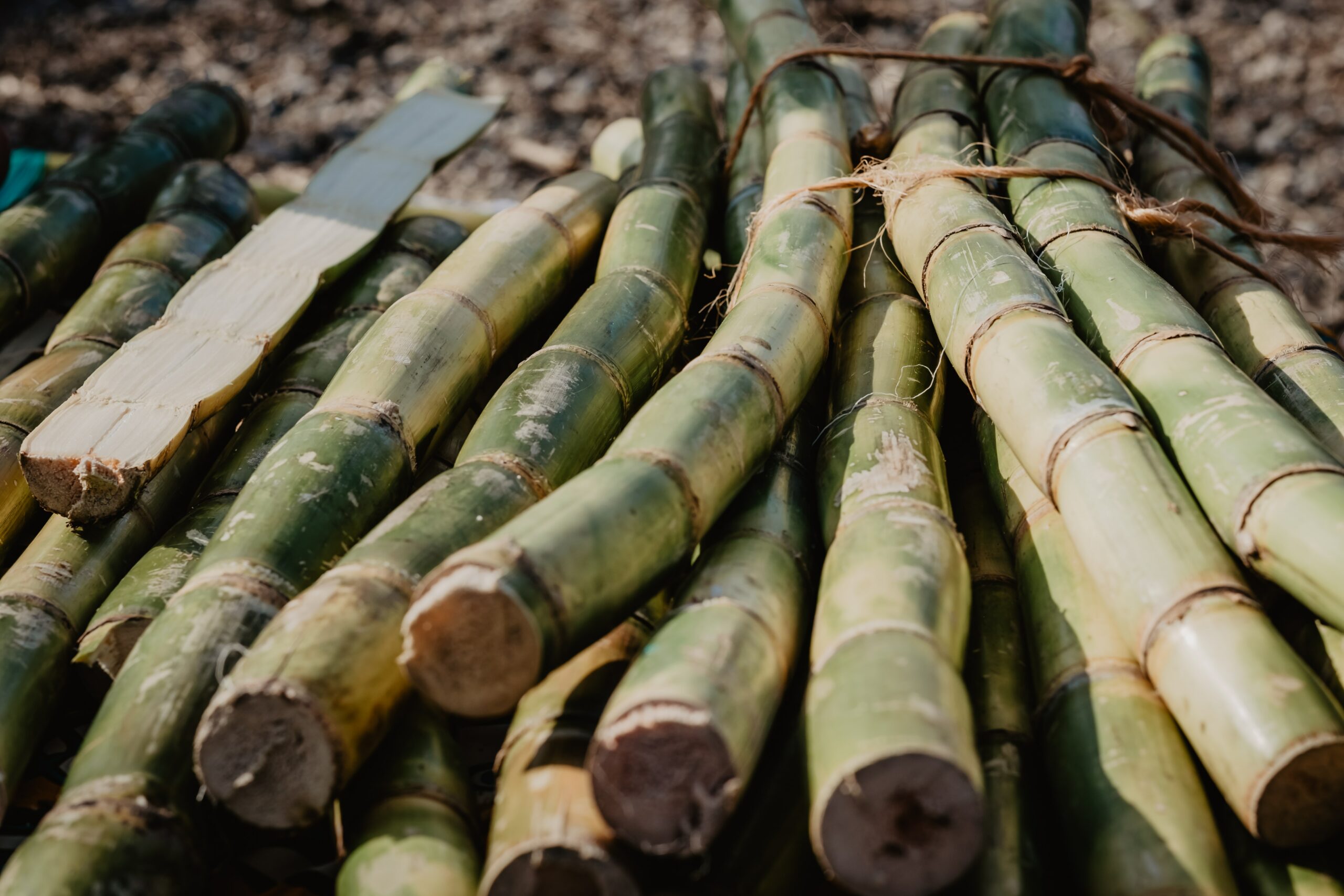Understanding Exactly How Sugar Canes Work: What Are Sugar Canes Used For in Food and Beyond?
Sugar canes are essential to various aspects of both culinary and industrial techniques. Their convenience enables them to be changed into sweeteners, drinks, and even biofuels. As one explores the trip from cultivation to handling, the varied applications of sugar walking sticks reveal an intricate interaction between agriculture and sector. Nevertheless, the ramifications of sugar cane manufacturing extend beyond mere utility, questioning regarding ecological sustainability and financial impact.
The History and Beginning of Sugar Canes
Although commonly considered given in contemporary diets, the background and beginning of sugar canes expose a complex trip that extends thousands of years. Belonging To Southeast Asia, sugar walking cane was first cultivated around 8000 BCE, with its pleasant juice ending up being very valued by early worlds. By the first millennium advertisement, it infected India, where it was fine-tuned right into crystallized sugar, a notable technology that changed its usage and trade. The introduction of sugar walking stick to the Mediterranean occurred around the 7th century, many thanks to Arab investors, that acknowledged its economic potential.During the Age of Expedition, European colonists established sugar plantations in the Caribbean, substantially influencing international trade. By the 17th century, sugar ended up being a standard commodity, sustaining economies and influencing social frameworks. The story of sugar walking sticks is intertwined with agriculture, commerce, and social exchanges, marking its significance in forming modern cooking methods and economic systems.

Cultivation and Collecting Practices
The growing and harvesting of sugar walking sticks include several critical techniques that establish the top quality and return of the plant - What Are Sugar Canes Used For. Key elements consist of effective soil prep work strategies, specific planting techniques, and efficient collecting methods. Comprehending these methods is vital for optimizing manufacturing and making certain sustainability in sugar walking stick farming
Dirt Prep Work Techniques
Reliable soil prep work techniques are essential for effective sugar walking cane farming, as they lay the structure for healthy and balanced development and ideal yield. The procedure starts with dirt screening to assess nutrient degrees and pH equilibrium, permitting tailored changes. Raking and tilling are after that utilized to break and freshen the soil up compaction, boosting origin penetration. Incorporating raw material, such as garden compost or well-rotted manure, boosts soil fertility and structure. In addition, proper drain systems are vital to stop waterlogging, which can impede walking stick development. Cover cropping might also be used to subdue weeds and boost soil health. These methods jointly assure that sugar cane has the very best atmosphere to thrive, bring about robust plant health and raised productivity.
Growing and Growth
Successful planting and growth practices are essential for optimizing the yield of sugar cane. The procedure starts with selecting healthy seed canes, which are segments of mature stalks abundant in buds. These seed walking canes are typically planted in well-prepared soil, ideally at a depth of 4 to 6 inches, ensuring appropriate moisture and aeration. Sugar walking cane flourishes in warm climates with ample sunshine and calls for regular irrigation, especially during dry spells. Fertilizing with potassium, nitrogen, and phosphorus is critical to promote durable development. Weed control is likewise crucial, as competition can prevent development. Normal monitoring of plant health and wellness and dirt problems permits timely treatments, eventually resulting in a successful plant that meets market needs.
Harvesting Approaches
Harvesting sugar cane needs cautious preparation and implementation to ensure maximum return and high quality. Generally, the harvest occurs when the walking cane reaches optimal sugar content, usually between 12 to 18 months after growing. There are two key methods: handbook and mechanical harvesting. Hand-operated harvesting includes workers using machetes to reduce the stalks at ground level, making sure minimal damages to the plant and dirt. In comparison, mechanical harvesting employs customized devices that cut, cut, and move the cane, raising efficiency and lowering labor costs. However, mechanical methods can lead to higher dirt compaction and loss of nutrients. Regardless of the approach, prompt harvesting is necessary, as hold-ups can lead to decreased sugar high quality and raised sensitivity to pests and illness.
Processing Methods for Sugar Removal
The handling of sugar cane is an important stage in sugar production, encompassing a number of crucial methods - What Are Sugar Canes Used For. Gathered walking stick undergoes juicing and squashing to remove its pleasant fluid. This juice after that continues via filtration and formation, transforming it right into the sugar most frequently used today
Collecting Sugar Walking Stick
Sugar cane gathering marks an essential phase in the production procedure, where timing and strategy play crucial duties in maximizing return. Normally, the harvest happens when sugar material is at its optimal, which varies based upon climate and growth conditions. Workers use customized equipment or guidebook devices to cut the walking stick at the base, making certain minimal damage to the plant. Correct strategy is crucial; reducing expensive can reduce the quality and amount of the sugar extracted later. After reducing, the walking stick needs to be transferred promptly to processing centers to protect against putridity and sugar deterioration. The efficiency of the harvesting procedure substantially influences the total efficiency and earnings of sugar walking stick farming, making it a crucial emphasis for manufacturers.
Crushing and Juicing
As soon as sugar cane is collected, the following essential action involves juicing and crushing to remove the wonderful fluid which contains sucrose. This procedure usually employs hefty machinery made to crush the stalks, damaging down the fibrous framework and launching the juice. Rollers or mills apply considerable pressure, allowing the walking cane juice to stream out while dividing the fibrous residue, recognized as bagasse. Once smashed, the walking stick is commonly based on a collection of pressing stages to maximize juice removal. The gathered juice is abundant in sugar and might contain pollutants, which will certainly be resolved in later processing actions. In general, juicing and squashing are important strategies that change gathered sugar walking stick right into a fluid form suitable for more refinement.
Filtration and Crystallization
Purification and formation are pivotal processes in transforming raw cane juice into polished sugar. After drawing out juice from crushed sugar walking canes, the fluid check my site consists of impurities such as plant fibers, healthy proteins, Visit Website and minerals. To attain purification, the juice undergoes information, where warm and lime are contributed to precipitate impurities, which are after that removed. The cleared up juice is then concentrated with evaporation to develop a thick syrup.Next, formation occurs, where sugar crystals form as the syrup cools. This process normally involves seeding the syrup with existing sugar crystals to promote consistent growth. The resulting crystals are separated from the remaining molasses with centrifugation, generating pure sugar. This polished item is after that dried and packaged for different culinary uses.
Culinary Utilizes of Sugar Canes
While typically connected primarily with sweeteners, sugar canes supply a flexible array of culinary applications beyond their duty in sugar manufacturing. Fresh sugar cane can be juiced, yielding a pleasant, invigorating beverage appreciated in many exotic regions. This juice works as a base for cocktails and smoothie mixes, including an unique flavor profile.Additionally, sugar cane syrup, stemmed from boiling down the juice, is used as an all-natural sugar in numerous recipes, from marinades to treats. The syrup passes on an abundant, caramel-like flavor, enhancing both sweet and mouthwatering recipes.In some cuisines, sugar walking cane stalks are barbequed or baked, offering a distinctive great smoky preference that complements vegetables and meats. Sugar cane can be incorporated into desserts, such as candies and puddings, where its sweet taste and fibrous structure create wonderful contrasts. Overall, sugar canes contribute to both typical and innovative cooking productions throughout diverse societies.
Industrial Applications Past Food
Past their cooking usages, sugar canes play a substantial duty in numerous commercial applications, adding to markets such as bioenergy, paper production, and bioplastics. The fibrous product of sugar walking stick is made use of in the manufacturing of biofuels, especially ethanol, which serves as an eco-friendly power resource that decreases dependence on nonrenewable fuel sources. In the paper market, bagasse, the fibrous deposit left after juice extraction, is refined right into pulp for paper and cardboard manufacturing, advertising sustainable techniques by using waste. Additionally, innovations in bioplastic modern technology have caused the development of naturally degradable plastics originated from sugar cane, providing a green option to traditional petroleum-based plastics. These industrial applications not just enhance the worth of sugar walking canes but additionally straighten with worldwide movements in the direction of sustainability and renewable energies, highlighting their flexibility beyond the cooking area.

The Environmental Impact of Sugar Walking Stick Manufacturing
The manufacturing of sugar walking cane, regardless of its numerous industrial advantages, positions considerable environmental obstacles. Deforestation is usually an effect, as vast areas of land are cleared to cultivate sugar walking cane, leading to environment loss and biodiversity try here decline. Furthermore, the intensive farming techniques connected with sugar walking cane growing can result in dirt deterioration and disintegration. The heavy usage of pesticides and fertilizers to take full advantage of yields adds to water pollution, detrimentally impacting water ecosystems.Moreover, sugar walking cane production is connected to boosted greenhouse gas discharges, particularly through land-use modifications and the burning of cane areas before harvest. These practices not only influence air quality however likewise contribute considerably to climate change. Furthermore, the water-intensive nature of sugar walking cane farming places anxiety on neighborhood water sources, impacting neighborhoods and ecological communities reliant on these materials. Attending to these environmental effects is vital for sustainable sugar cane production in the future.
Regularly Asked Inquiries
Exist Health Advantages Associated With Consuming Sugar Cane?
The inquiry of wellness benefits related to sugar walking stick usage highlights prospective advantages. Sugar walking cane may offer hydration, crucial minerals, and anti-oxidants, however small amounts is necessary as a result of its all-natural sugar material and possible health and wellness ramifications.
How Does Sugar Cane Contrast to Other Sweeteners Nutritionally?

Sugar walking cane offers natural sweet taste, mainly consisting of sucrose, while other sugar vary in structure and caloric web content. Contrasted to fabricated options, sugar walking stick offers minerals and vitamins, though it remains high in calories and carbs.
Can Sugar Walking Stick Be Grown in Non-Tropical Areas?
Sugar cane mainly flourishes in exotic climates, calling for bountiful rainfall and warm temperatures. While some non-tropical areas attempt cultivation, success is restricted due to poor warmth and growing periods, making large-scale manufacturing challenging.
What Are the Usual Pests or Conditions Impacting Sugar Canes?
Typical pests influencing sugar walking sticks consist of the sugarcane borer and aphids, while diseases like leaf scald and red rot present substantial threats. Reliable monitoring strategies are important for keeping healthy sugar walking cane crops and making the most of returns.
Just How Does Sugar Walking Stick Impact Resident Economies?
The influence of sugar walking stick on local economic situations is substantial, giving job opportunity, boosting agricultural industries, and adding to exports. Its growing supports neighborhood organizations and boosts community development through enhanced earnings and facilities renovations. Indigenous to Southeast Asia, sugar walking cane was first grown around 8000 BCE, with its pleasant juice ending up being very valued by very early people. The introduction of sugar cane to the Mediterranean happened around the 7th century, thanks to Arab investors, that recognized its economic potential.During the Age of Exploration, European colonists developed sugar ranches in the Caribbean, significantly impacting worldwide trade. The processing of sugar walking cane is a critical stage in sugar production, including numerous vital techniques. While commonly connected primarily with sugar, sugar canes supply a functional range of cooking applications beyond their role in sugar production. The heavy usage of pesticides and plant foods to make best use of yields adds to water air pollution, negatively impacting aquatic ecosystems.Moreover, sugar walking stick production is linked to boosted greenhouse gas emissions, specifically through land-use adjustments and the burning of cane fields prior to harvest.